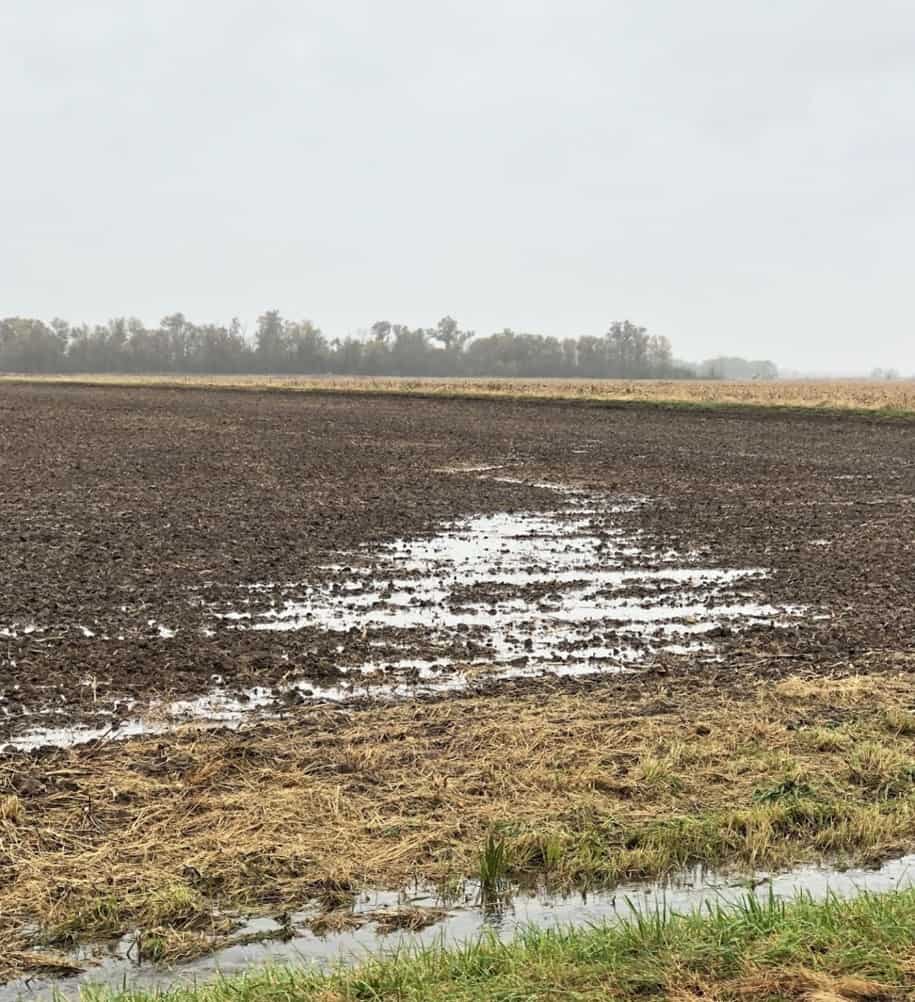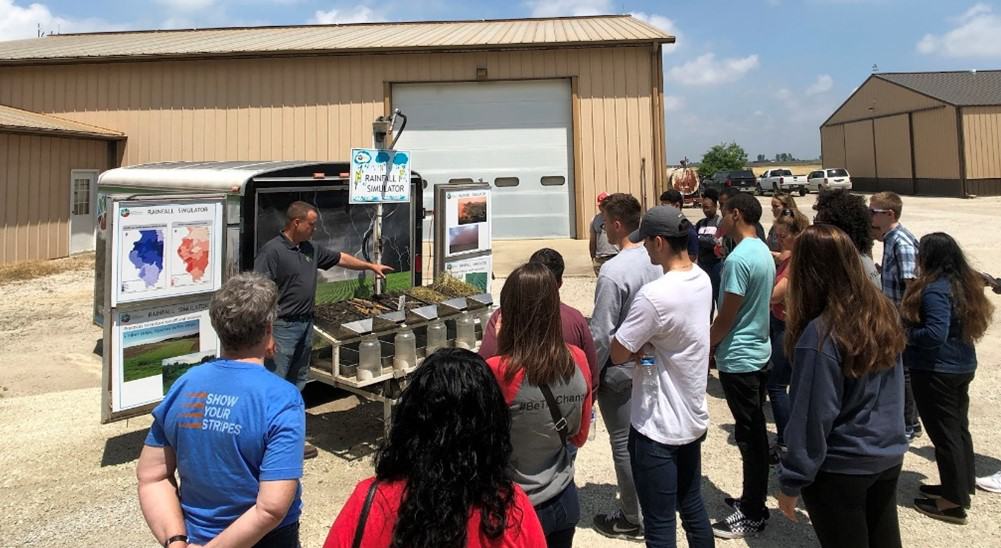Making Observations Easier with ISAP’s Rainfall Simulator
Author: ISAP Soil Health Specialist, Jim Isermann
Thinking through how our soil functions is not always an easy concept, or even an idea we consider very often. Getting down to the basics of how we want our soils to perform can help us better understand the role the soil plays and what effects our management can have on them. This ultimately has a huge impact on our farming operations, as well as what impact our farms have on the environment. One of the most significant functions of the soil relates to how it interacts with water during heavy rainfall events.
How do we want our soils to function under heavy rainfall events? First, we want the water to infiltrate into the soil and not run off or create ponding. Second, if we do have runoff, we want the water leaving our fields to be clean and not carry soil from the field. Given the more intense rainfall events we’ve experience in recent years, we need to begin reconsidering erosion concerns on even our flat fields.

Example from an in-season field assessment of soil erosion on flat ground.
Within the water and soil cycle there are variables beyond our control. The inherent texture (sand, silt, and clay content) of our soils can influence how well water infiltrates but is not something we can change. The slope of the field or the amount of rainfall we receive is also not on this list of things easily changed. Fortunately, we do have some significant control over our soil aggregates and the quality of the soil structure.
One step to better soil is providing the environment for mycorrhizal fungi to thrive. These fungi produce “glues” in the soil that help hold it together, create air space between soil particles, and allow water to infiltrate. An aggregated soil structure can also minimize compaction due to equipment. This is important, especially in the spring, when we see sealing and crusting on the soil surface causing crop emergence issues. When it comes to preventing soil erosion, a well aggregated soil holds up to intense rainfall events or flowing water much better. These “glues” keep the finer parts of the soil from detaching and being carried away with the water.
These fungi thrive in management systems where we reduce tillage and introduce cover crops. Many, but not all cover crops, encourage mycorrhizal fungi. I would encourage any farmer or landowner to spend some time researching the best species and mixes. Increasing the amount and diversity of living roots in the system throughout the year is also important to prevent nutrients, like nitrates, from leaving tile lines.
But how can we see this effect in person? When we receive heavy rains, I am amazed at how few growers actually go outside to watch how water impacts their fields. Go outside during the next rainstorm and watch how water impacts each field and how much soil is being carried away. While most of us don’t want to venture out during a storm, these visuals can be impressive when comparing different management practices.

Driving by fields during or just after a rainfall event is a great way to compare the effect of different management systems on water flow patterns and soil movement.
The Illinois Sustainable Ag Partnership’s rainfall simulator can make these observations much easier! The simulator allows you to observe up to five different field scenarios and how an intense rainfall interacts with the soil. We can easily see the differences from fields that are heavily tilled verses fields that have a cover crop. We can even compare what effects a grassed waterway has or a grazed pasture. This simulator applies an equal amount of simulated rainfall across the trays to demonstrate how that water reacts. The trays are filled with 2.5-inch-deep slabs of soil pulled (as undisturbed as possible) from a field; this depth is sufficient to look at the interaction of rainfall at the soil surface.
The set up of the simulator lets us see a comparison of how much water runs off the soil verses how much infiltrates, as well as how clean the runoff is under different scenarios. The entire system is contained within the trailer with a water tank and equipment to run the simulation without electric hook ups. Check out the Illinois Sustainable Ag Partnership’s website to find events where the simulator will be near you. You can also request the simulator at your next upcoming event through the website. To see the simulator in person, come by the Illinois Corn Growers Association tent at the 2021 Farm Progress Show in Decatur this year.
We hope to see you there!

Jim Isermann, demonstrating ISAP’s rainfall simulator.